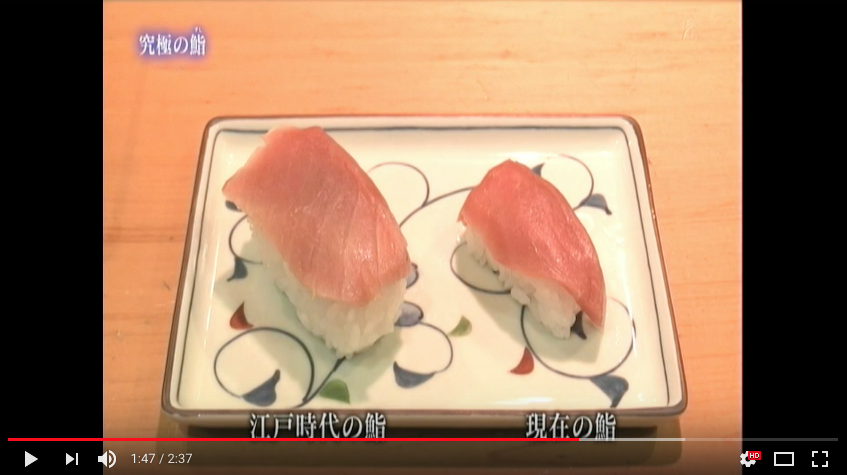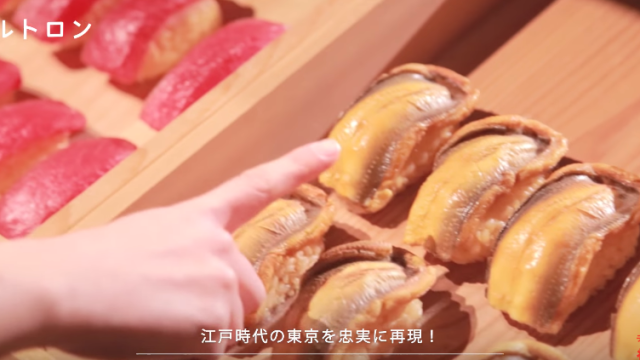During the Edo Period (1603-1868), sushi was between two to four times larger than it is today.
Screenshot: ルトロン – おでかけ動画マガジン
But why? One of the biggest reasons is that Edo (present-day Tokyo), where sushi was invented, was a metropolis from which large numbers of people were passing in and out. They needed food they could take with them, and sushi was the era’s equivalent of fast food.
寿司は、江戸時代には屋台料理だったから、現代のように回転寿司がまちなかで気軽に食べられるのは原点回帰な気がする。近々「江戸時代の写真から読み解く街づくり」のイベントをやるのでいろいろ調査中です。 pic.twitter.com/TuPFufsUwv
— ナカムラクニオ(6次元) (@6jigen) October 28, 2017
During the Edo Period, there was a rapid rise in food stalls. Yohei Hanaya (1799 to 1858) is credited with inventing “nigiri-zushi”, or the “hand-pressed sushi”. (However, it’s certainly possible others were also making this type of sushi.)
The sushi of that era was closer to an onigiri with raw fish on it that the smaller pieces of sushi eaten today.

Screenshot: saru121
Above, on the left is Edo Period sushi, while its modern era counterpart is on the right.
江戸時代の寿司https://t.co/Sc4AtzhxVz
わいは江戸時代サイズで食いたいな(*´艸`) pic.twitter.com/1zU6IQhK27
— sakamobi (@sakamobi) March 22, 2018
According to website Tenpo, the flavour was also different. Today’s sushi is made with vinegared rice, but Edo Period sushi was apparently made with rice mixed with red vinegar that been made from sake lees.
That means the rice was reddish brown in colour, and not like the off-white or white rice of today. It was then eaten with soy sauce like now.
薄毛ライフから抜け出そう : 江戸時代の寿司wwww https://t.co/ndZqoYHByO pic.twitter.com/1PUD5d8O6l
— SPPMIZUHO (@SPP_MIZUHO) February 28, 2018
Tenpo adds that two pieces of Edo Period sushi would be enough to stuff one’s belly, making these convenient and filling meals to eat on the go.

Comments
One response to “Why Sushi Used To Be Much Larger”
Sushi is still made with made with “rice mixed with red vinegar that been made from sake lees“, aka akazu or akasu. Not ALL sushi, but a good itamae will vary what kind of vinegar they use based on the flavor +/or fattiness of the neta, or topping.
Interesting article!
Oh i just noticed a typo by the way, “Period sushi was apparently made with rice mixed with red vinegar that been made from sake lees”